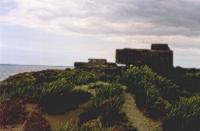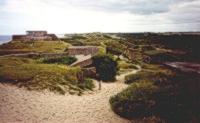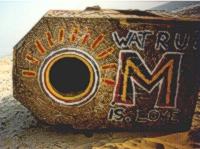German defensesIn july 1941 it was clear that the planned invasion of Great Britain would not be launched. The Germans had turned their eyes to the east and the west coast was becoming a appearent threath to the safety of the Third Reich. Hitler desided that the westcoast from the north of Norway upto the French south border in the Pyrenees should be turned into a wall that could not be taken. The defensive wall should become a copy of the Siegfriedline. The length of the coast was 500 kilometres.
After the raid on Dieppe the threath of an invasion became more serious. Hitler ordered the building of another 15.000 bunkers that could withstand attacks from tanks, gas bombardment form the air and shelling form the sea. three million soldiers where stationed on the coast with another one-and-a-half million soldiers in reserve behind the lines.
Parts of the Maginot line where dismantled to provide guns and supplies for the Atlanticwall. All the private construction companies in the occupied countries in the west would eventually work on the construction of the Atlanticwall. There was a shortage of steel which ment that many bunkers had to be build completely out of cement. In spite of the enormous efforts, by 1943 the wall was not upto military standard in most places. By orders of Hitler, Rommel inspected the Atlanticwall in november 1943. He was shocked by the state the wall was in. In a number of places local commanders had posponed the building of the wall.
|
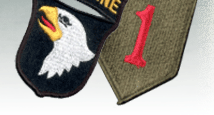
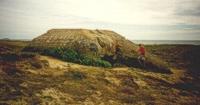 In
december 1941 Hitler declared that he had build a wall of defenses that
was impenatratabele. In reality, not much had been constructed at that
time. At the path of Calais the Germans had build some large bunkers which
Goebbels used for his propaganda machine.
In
december 1941 Hitler declared that he had build a wall of defenses that
was impenatratabele. In reality, not much had been constructed at that
time. At the path of Calais the Germans had build some large bunkers which
Goebbels used for his propaganda machine.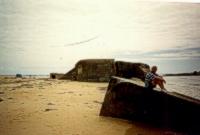 Between
the bigger bunkers there had to be a number of smaller bunkers and strongpoints.
These where all designed by Hitler himself. Organisation Todt was used
to complete this immense task. Ingenieur Todt was the designer of the
Siegfriedline (Westwall).
Between
the bigger bunkers there had to be a number of smaller bunkers and strongpoints.
These where all designed by Hitler himself. Organisation Todt was used
to complete this immense task. Ingenieur Todt was the designer of the
Siegfriedline (Westwall). 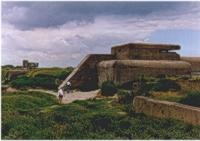 Rommel
had learned in North Africa that it was very difficult to move troops
when the allies have air supremency. He expeced that this would be the
case when the allied would land in the west and that was his background
when he made his remark that the first day of the invasion would for both
parties be the longest day. Rommel wanted great numbers of obstacles on
the beaches and in the land behind it to prevent the invasion. Land had
to be flooded and open fields lined with obstacles to prevent attacks
by parachutists. Rommel places orders for enormous amount of mines in
all shapes and sizes.
Rommel
had learned in North Africa that it was very difficult to move troops
when the allies have air supremency. He expeced that this would be the
case when the allied would land in the west and that was his background
when he made his remark that the first day of the invasion would for both
parties be the longest day. Rommel wanted great numbers of obstacles on
the beaches and in the land behind it to prevent the invasion. Land had
to be flooded and open fields lined with obstacles to prevent attacks
by parachutists. Rommel places orders for enormous amount of mines in
all shapes and sizes. 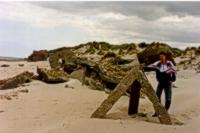

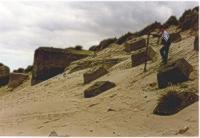 Anchor
bloks for steel obstacles.
Anchor
bloks for steel obstacles.